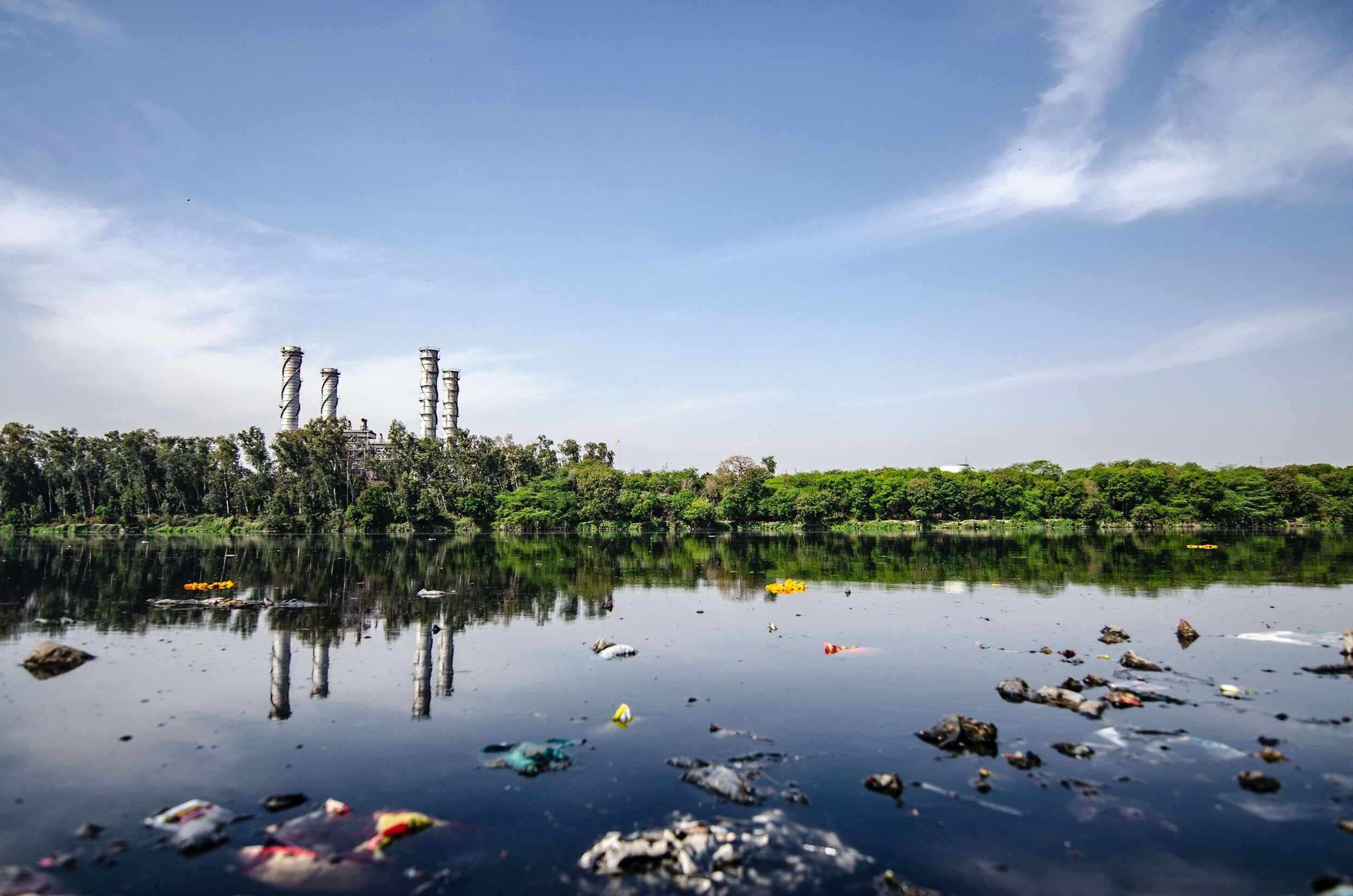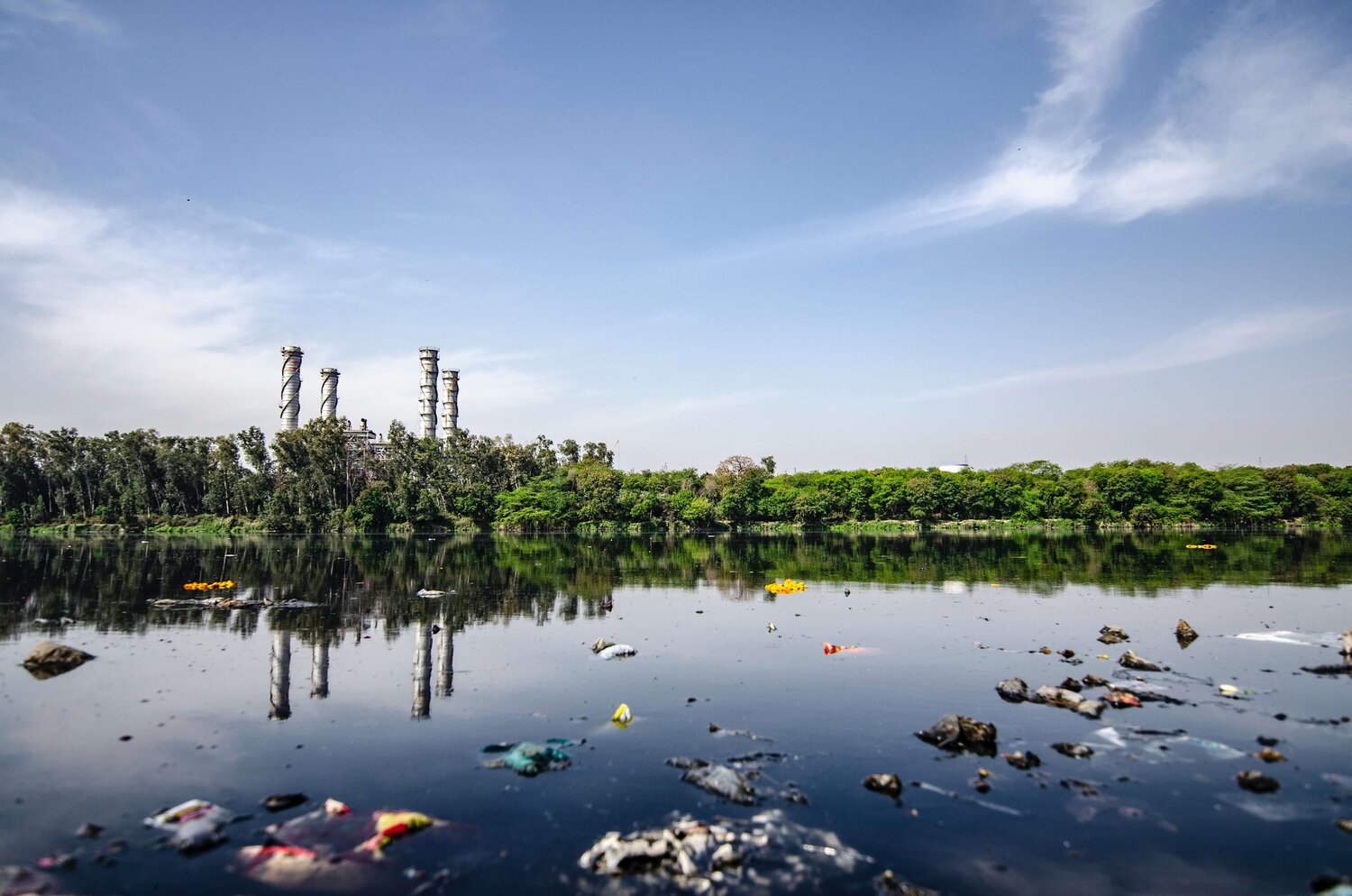Your Cart is Empty
Extra 10% Off Sale Items - Discount applied in basket
Extra 10% Off Sale Items - Discount applied in basket
Extra 10% Off Sale Items - Discount applied in basket
Extra 10% Off Sale Items - Discount applied in basket
June 04, 2021 5 min read
It’s no secret that the fashion industry has a significant impact on our environment. In fact, it is the second largest polluter in the world, just after the oil industry. The environmental damage is only increasing as the industry booms. One of the largest issues in the production process, and one that’s not often discussed, is that of the chemicals used in various stages of garment production from fibre productions to dyes and treatments. We often think of the risks associated with chemicals in things like cleaning products and pharmaceuticals, but rarely give serious thought to the chemicals that are used in the production of the clothes we wear all day long.

Toxic Fashion:
Around 8,000 synthetic chemicals are used in the fashion, textile and footwear industry. The typical textile supply chain is incredibly dirty, responsible for polluting fresh water without any kind of filtering or recycling, especially in developing countries where it is believed as much as 90% of wastewater can be discharged without treatment. The reason for this is that filter systems, which are designed to stop the chemicals, are often not used by production facilities in developing countries. The costs of wastewater management are greatly outweighed by the benefits to human health, economic development and environmental sustainability.
Wastewater contains toxic substances such as lead, mercury, and arsenic, among others. However, the problem is not only found here, another major source of contamination can be found in the fertilizers used in growing crops such as cotton. Therefore, toxic chemicals are used in all stages of the process; from growing crops and manufacturing synthetics to dying fabrics and creating various performance functions with treatments such as DWR (Durable Water Repellent).
The chemical process is extremely harmful for the aquatic life and the health of the millions of people living by those rivers banks. The contamination eventually reaches the sea where it spreads around the globe.

It doesn’t have to be this way:
The adverse environmental health and social outcomes of textile industry highlighted above makes current production within ‘fast fashion’ highly unsustainable. However, Sustainable, healthy, and ethical options exist.
Many harmful chemicals used in dyes and treatments can be avoided and replaced with natural or less harmful alternatives. Those chemicals that cannot be avoided can be treated to remove toxic substances before they are disposed of and make their way into the water supply.
For natural fibres, one approach the industry has taken is using sustainably grown crops, including organic cotton, cashmere and organic wool; these require less pesticides, irrigation, and other resources. Organic Cotton for example, not only uses less harmful substances, it also requires 71% less water and 62% less energy to produce than conventional cotton.
Polyester is the main component in nearly half the world’s clothing, with forecasts predicting this amount could nearly double by 2030. The problem is, polyester is not a sustainable textile option, as it is made from polyethylene terephthalate (PET), the most common type of plastic in the world. The production process involves huge quantities water, energy and dangerous chemicals.
There is so much surplus plastic in the world that an increasingly common option is to use recycled polyester in manufacturing. This diverts plastic from entering landfill and our oceans, thus reducing soil, air and water pollution. These materials offer an exciting prospect for the future of plastic; keeping all the useful attributes we love like durability, but minimising the environmental impacts at the end of life.
It often comes down to costs:
The major factor in the adoption of a lot of these alternatives is that it comes down to cost. It costs more to treat and clean the wastewater from dyeing and treating clothes, it often costs more to use non-harmful alternative treatment and currently recycled fibres tend to be more expensive. Many harmful practices are regulated against in places like the UK and Europe, but when manufacturing takes places further afield and is heavily squeezed on price then corners tend to be cut and profit is put above the environment.

Tips to detoxify your wardrobe:
Opt for sustainable, naturally occurring fabrics that are coloured with natural dye, or look for items made from recycled materials.
Keep your eyes peeled for certifications. If an item of clothing has been marked by GOTS, GTS, STANDARD 100 by OEKO-TEX®, BLUESIGN®. These are leading standards that ensure the production process follows strict ecological and social criteria protecting both works and the environment.
Buy less, buy better quality. Opt out of fast fashion by choosing items that are made to last, rather than those meant to last one season.
Look at where your clothes are made and try to buy from brands that are transparent about their manufacturing processes.
Where we are:
In reality, we are aware that no product can be produced without some form of impact on the environment. However, we are fully committed to reducing our impact wherever possible. This means working with mills committed to sustainable practices, championing pioneering manufacturing processes like recycled fabrics and opting for organic textiles that dramatically reduce energy and water consumption.
The Everyday Meander Sweat
Material: 100% Organic Cotton
Certified: Gots Certified, Bluesign® Certified Partner, Standard 100 by OEKO-TEX®
The Weekender Tee
Material: 85% Recycled Polyester / 15% Cashmere
Certified: Bluesign® Certified Partner, Standard 100 by OEKO-TEX®, GRS Certified - Global recycled standard
The Recycled Parka
Material:100% Recycled Polyester PFTE free and PFC free
Certified:Bluesign® Certified Partner, Standard 100 by OEKO-TEX®, GRS Certified - Global recycled standard
Where we want to be:
Currently over 90% of the fabric in our manufacturing comes from organic or recycled materials. We aim to get this to 100% by the end of 2022. We will always continue to learn more about manufacturing technologies and work to reduce our impact as much as we possibly can and hope to use our brand as a positive example in the industry.
This is the third edition of our sustainability series. To read Edition 1: What is sustainable fashion,click here or to read Edition 2: Why We Plant Tree’s,click here.
Comments will be approved before showing up.
